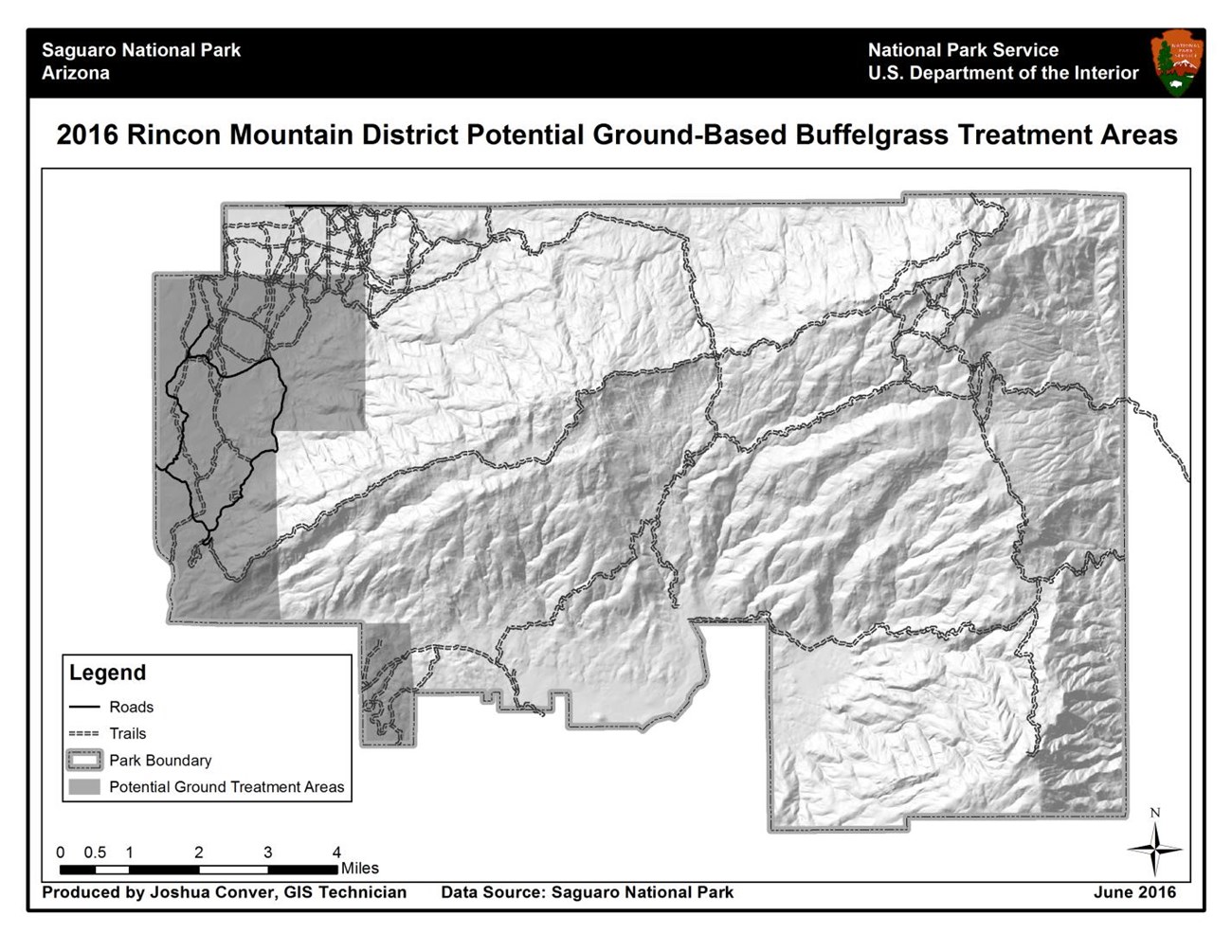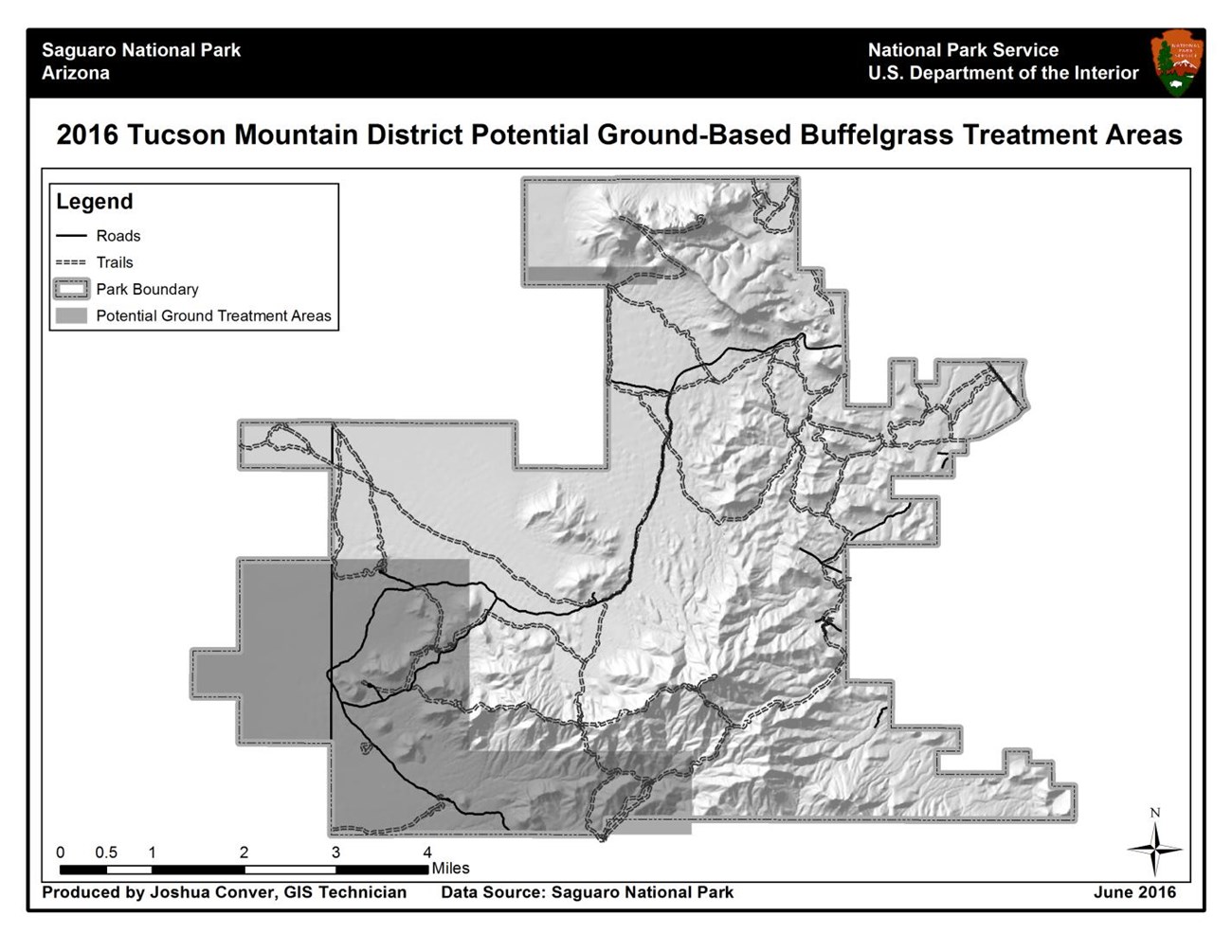|
Contact: Scott Stonum, (520) 733-5170 Tucson, AZ –With the recent increase in monsoon activity, the conditions are optimal for native plant restoration work in Saguaro National Park. To protect and restore native vegetation and restore wildlife habitat, the Park uses ground-based field crews to manually remove and apply herbicides to buffelgrass. By controlling buffelgrass, the risk of fire in the lower Sonoran Desert is mitigated and the native plants do not have to compete for resources like nutrients and water. The park plans to conduct ground-based herbicide control for two to three months, beginning in mid-July. Field crews plan to treat buffelgrass along approximately 50 miles of roadway and within 500 acres of park land in both the Tucson Mountain and Rincon Mountain Districts, No public closures for these efforts are anticipated. The treated areas are safe to enter as soon as the herbicide dries, within 15 minutes after application. A blue dye will be mixed in to mark plants that have been treated. For additional information, including a map of areas to be treated by ground crews, please visit https://www.nps.gov/sagu/naturescience/invasive-plants.htm.
The park will also use a helicopter for aerial herbicide application where buffelgrass infestations are on steep and often dangerous terrain in remote areas of the park. Aerial spraying is planned for later this summer. Additional information will be released as it becomes available, specifying locations, dates and any potential closures. These treatment plans were approved for use in an Environmental Assessment, which can be viewed at https://www.nps.gov/sagu/learn/management/restoration-plan.htm
Buffelgrass is an aggressive, non-native grass that lives for many years and is a serious threat to biological conservation. Buffelgrass directly competes with the saguaro, the park's name sake, and other native Sonoran Desert plants. Buffelgrass also carries hot and intense fires in an ecosystem that is not adapted to fire. Buffelgrass invades natural areas as well as many urban community areas and road corridors. Buffelgrass fires could become a major threat to public safety and property.
Buffelgrass management efforts across southern Arizona continue to be successful. Saguaro National Park is the lead agency in the Southern Arizona Resilient Landscape Collaborative through funding from the Department of Interior. Partners include the Catalina District of the Coronado National Forest, Buenos Aires Wildlife Refuge, Ironwood Forest National Monument; Pima County managed lands, tribal lands, Arizona Sonora Desert Museum, Southern Arizona Buffelgrass Coordination Center, US Geological Survey, and Northern Arizona University. This interagency group is playing a key role in building a fire resilient landscape by addressing the threat of buffelgrass. Visit https://www.nps.gov/sagu/learn/news/2016-southern-arizona-resilient-landscapes-collaborative.htm for more information.
Volunteers, including local residents and groups, have also been instrumental in helping to remove buffelgrass from the greater Tucson area. Tucson Clean and Beautiful, Sonoran Desert Weed Wackers, the Town of Oro Valley, Marana, and Southern Arizona Buffelgrass Coordination Center are just a few of the many entities working to control buffelgrass in the community. Visit http://buffelgrass.org for more information.


|
Last updated: July 5, 2016
